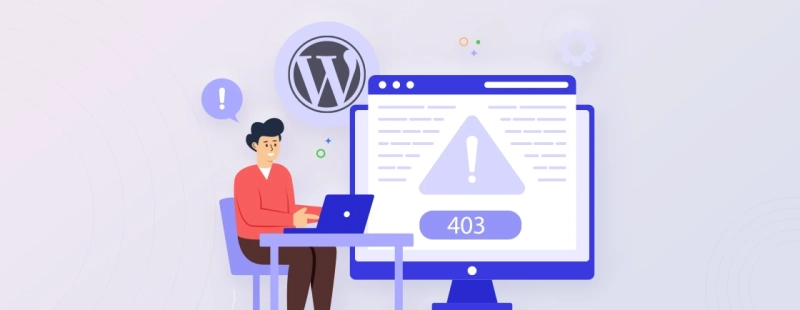The 403 Forbidden Error in WordPress is an HTTP status code that indicates a client (typically a web browser) attempted to access a web page or resource on a WordPress site, but the server refused to fulfil the request.
403 forbidden error msg
Basically, this HTTP status code communicates a clear message: You don’t have permission to access the requested resource. Imagine this as a virtual “No Entry” sign posted by the server in response to your browser’s request.
In web terminology, we recognize this error as a clear distinction between authorization and authentication. While authentication verifies your identity (usually through a username and password), authorization checks whether your authenticated self has the green light to access a specific page or file.
What triggers the WordPress 403 Forbidden Error?
Now, onto the why. The WordPress 403 Forbidden Error can be triggered by several factors, each of which relates to issues with server permissions, security settings, or configuration errors. Here’s a detailed explanation of what can trigger this error:
Incorrect File or Directory Permissions: One of the most common causes is incorrect file or directory permissions on your server. If the server’s file permissions are set too restrictively, it may deny access to certain files or directories, leading to a 403 error.
Security Plugins and Firewalls: Security plugins or server-side firewalls designed to protect your WordPress site may mistakenly block legitimate requests, assuming they are suspicious or malicious. These plugins or firewalls might block IP addresses or specific URLs, causing a 403 error for legitimate users.
Incorrect URL Configuration: If your WordPress site’s URL structure is misconfigured, it can result in a 403 error. This can happen if there are issues with the .htaccess file, the permalink settings, or the server’s rewrite rules.
Server Configuration: Server misconfigurations, such as overly strict access control rules or security settings, can also lead to a 403 Forbidden Error.
Denial of Service (DoS) Protection: Some hosting providers employ DoS protection mechanisms that can inadvertently block legitimate requests if they detect an unusually high traffic volume from a single IP address. This can trigger a 403 error.
IP Blocking: In certain cases, either server administrators or security plugins may block specific IP addresses or IP ranges intentionally or unintentionally. If your IP is blocked, you’ll receive a 403 error when trying to access the WordPress website.
Authentication Failures: Repeated failed login attempts to restricted areas of your WordPress site, such as the admin dashboard, can trigger a temporary IP block and result in a 403 error. This is a security measure to prevent unauthorized access.
Resource Limitations: In shared hosting environments, resource limitations imposed by the hosting provider can cause a 403 error if your website exceeds its allocated resources.
To resolve the WordPress 403 Forbidden Error, you’ll need to investigate and address the specific cause. This often involves checking and adjusting file permissions, reviewing and configuring security plugins or firewalls, ensuring correct URL configurations, addressing server misconfigurations, and possibly contacting your hosting provider if necessary. The exact steps will depend on the root cause of the error.


